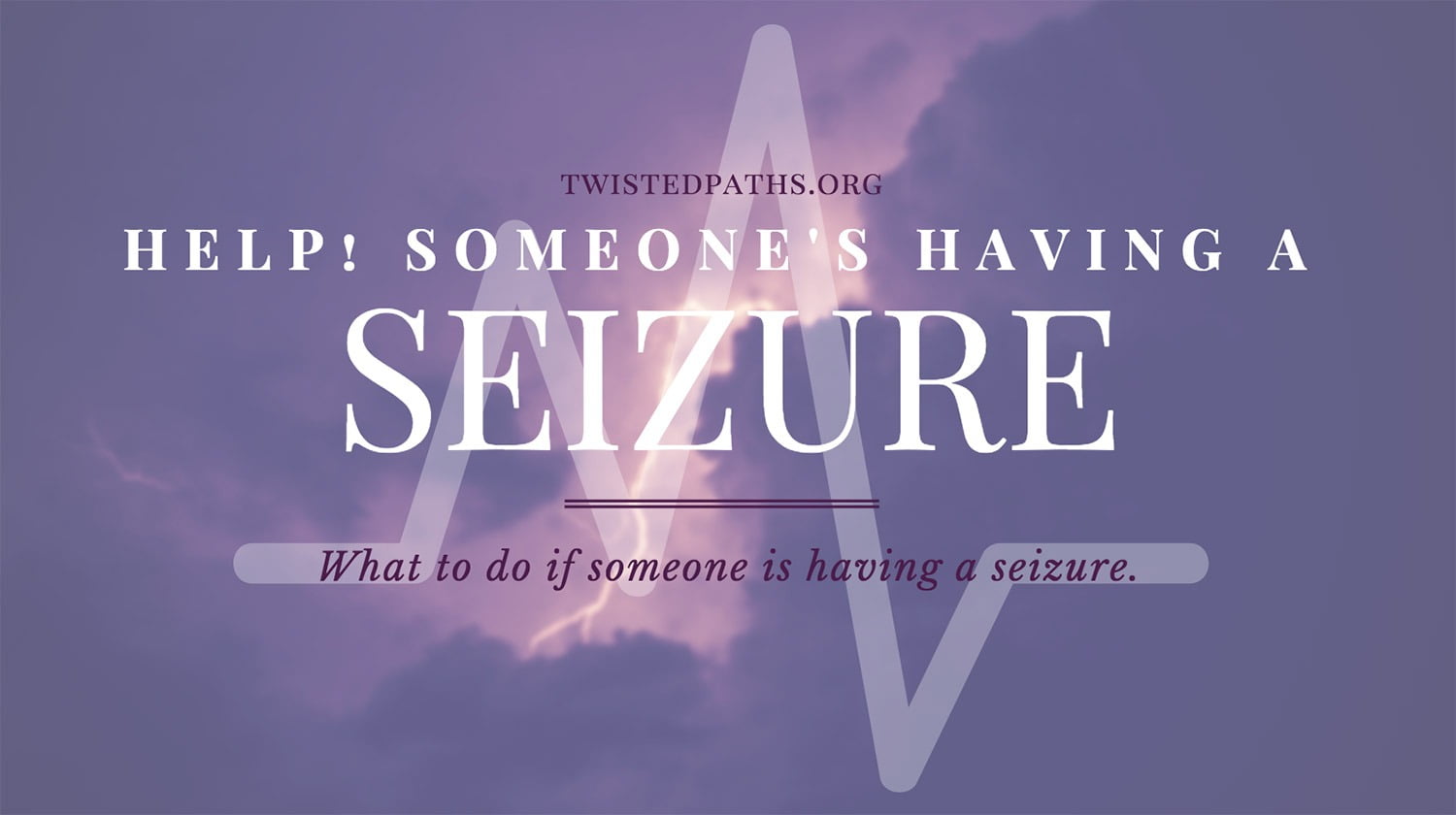Seizures can happen to anyone. According to a study published by researchers at the CDC, almost 1 in 100 people has active epilepsy. Seizures can also happen to people who do not have seizure disorder or epilepsy.
- According to the Centers for Disease Control (CDC), 1 in 10 people has had a seizure.
- Movies portray and normalize sometimes very dangerous “first aid” methodologies, such as pushing a towel into someone’s mouth so they won’t bite their tongue off.
- This can cause very dire consequences, like suffocation.
- Your focus when someone is having a seizure should be, “How can I keep him safe?” as opposed to, “How can I stop this seizure?”
- Knowing what to do and not do may help save a life!
A seizure is just a symptom of abnormal electrical activity in the brain. This could be triggered by something as seemingly benign as taking asthma medication, staring at flashing lights, or not getting enough sleep.
Sometimes a seizure really has no diagnosable cause. Other times it may be a symptom of a larger underlying issue such as a stroke or brain tumor. Keeping calm and knowing what to do may make a great difference in the outcome of the seizure.
I was diagnosed with seizure disorder in 2011.
A month and a half before my 22nd birthday, I had my first grand mal seizure. I was getting ready for my afternoon class at my university. One moment, I was putting my contacts in, squinting into the bathroom mirror. The next moment, I was “coming to” through a haze, staring up at strangers crammed into my bathroom, trying to press an oxygen mask onto my face.
Half a dozen different types of brain scans later, I was diagnosed with a rare type of vascular malformation called Arteriovenous Malformation. According to National Organization of Rare Disorders (NORD), the prevalence of this disorder in the United States is 10 in 100,000. Figures that I’d have a disorder that only has an annual “new-diagnosis” rate of 3,000 cases a year!
Here’s how to help someone who is having a seizure

Brain Surgery at 22.
After much deliberation with my neurosurgeon, neurologist, and parents, I concluded that a craniotomy was the best option. Other treatment methods vary from embolization – “clogging” affected blood vessels with some agent – to radiation treatments.
Given my young age, the risk of having a hemorrhagic stroke was high, as I was more active. The general risk is thought to be 2-4% a year. But compounded with the number of years I still had to live, there was a high chance that I was waiting for the ticking time bomb in my brain to explode.
There was a chance this disorder may kill me if I had a seizure and hit my head. Or if had a stroke. The surgery itself may kill me or leave me with severe disabilities if I were to have a stroke. I had to prepare for the worst, while remaining optimistic for the best.
Half a year later, I was wheeled out of the operating room after successful brain surgery to remove 3 AVMs. My grueling recovery process, and my journey with brain injury and its related disorders and symptoms had begun.
I’m a Contributing Writer at the INSIDER!

This post was very exciting because as of this article, I’m officially a contributing writer at the INSIDER! I’m a freelance writer!
Check the article out here: Here’s how to help someone who is having a seizure.
I’m very excited that I got to write about a topic I am very passionate about as my first assignment. And I hope I can continue to bring more awareness to disabilities, chronic illnesses, and rare disorders.
Having grown up reading and loving books since I was 2 or 3, becoming a writer has been a dream since I was in middle school. So even a first article at a publication seems like I’ve finally taken a few real steps towards my goal of writing a book.
Onwards!

My family has a history of seizure disorders like my uncle takes medicine for it and just a while back my cousin (his daughter at age 13) had a seizure that led into a stroke. She’s recovered at least and seems to be fine but she needs constant monitoring because that stuff can happen again.
I didn’t have any real seizures except when I had high fevers. Febrile seizures and since I’m the first child born to my parents, whenever I had seizures my mom would freak out and I’d go ride in the ambulance. I remember the moments in between those seizures still, I recount this because I understand the whole thing about seizures and what they could really be like with you.
To you, that was the greatest chance to keep living and not risk having a stroke and whatnot. You had to undergo a very frightening possibility of dying some way but taking that in your hands meant that you had a part in deciding where your life could be and now, you’re functional and despite a few other physical diseases, it seems you’re living a great life with you and your bf.